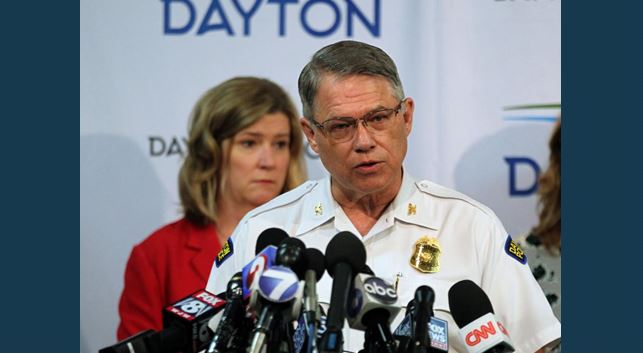
Aug. 16 (UPI) — Preliminary autopsy findings showed the gunman who shot and killed nine people in Dayton, Ohio, before being killed by police had cocaine in his system at the time of the shooting and that some other victims were struck by police gunfire.
Montgomery County Coroner Kent Harshbarger said Thursday that cocaine, anti-anxiety medication and alcohol were found in the blood of shooter Connor Betts.
“A pipe device was found in his pocket with an attached clear plastic baggie that has been determined to contain cocaine,” Harshbarger said. “And the assailant’s cavity blood sample was found to contain cocaine, alprazolam and ethanol.”
The shooter was wearing a bulletproof vest at the time of the Aug. 5 shooting and was likely shot at least 24 times as he made two efforts to get back on his feet after being downed by police gunfire.
The autopsy showed Betts had 52 gunshot wounds but some may have been exit wounds, the coroner said.
Autopsies also showed that two other people killed in the shooting were hit by rounds fired by police, although there was evidence to show they had already been fatally shot by the gunman.
“I believe by positioning, by pathway, by evaluating the scene, the video evidence, the first round, was — the lethal round — was the shooter’s, or assailant’s weapon, which has been scientifically confirmed to be from his weapon,” said Harshbarger.
Police said they were unsure if any of the 17 people injured in the shooting were struck by police gunfire.
Dayton Police Chief Richard Biehl said that it “weighs heavily” that police rounds “caused additional wounding,” but said lethal force against the shooter was required as long as he was still armed.
“I emphasized that our collected efforts were intended to save lives and prevent hard to innocent persons,” Biehl said. “However, the substantial danger in not shooting and not immediately stopping the assailant would have without question resulted in exponentially more fatalities.”






